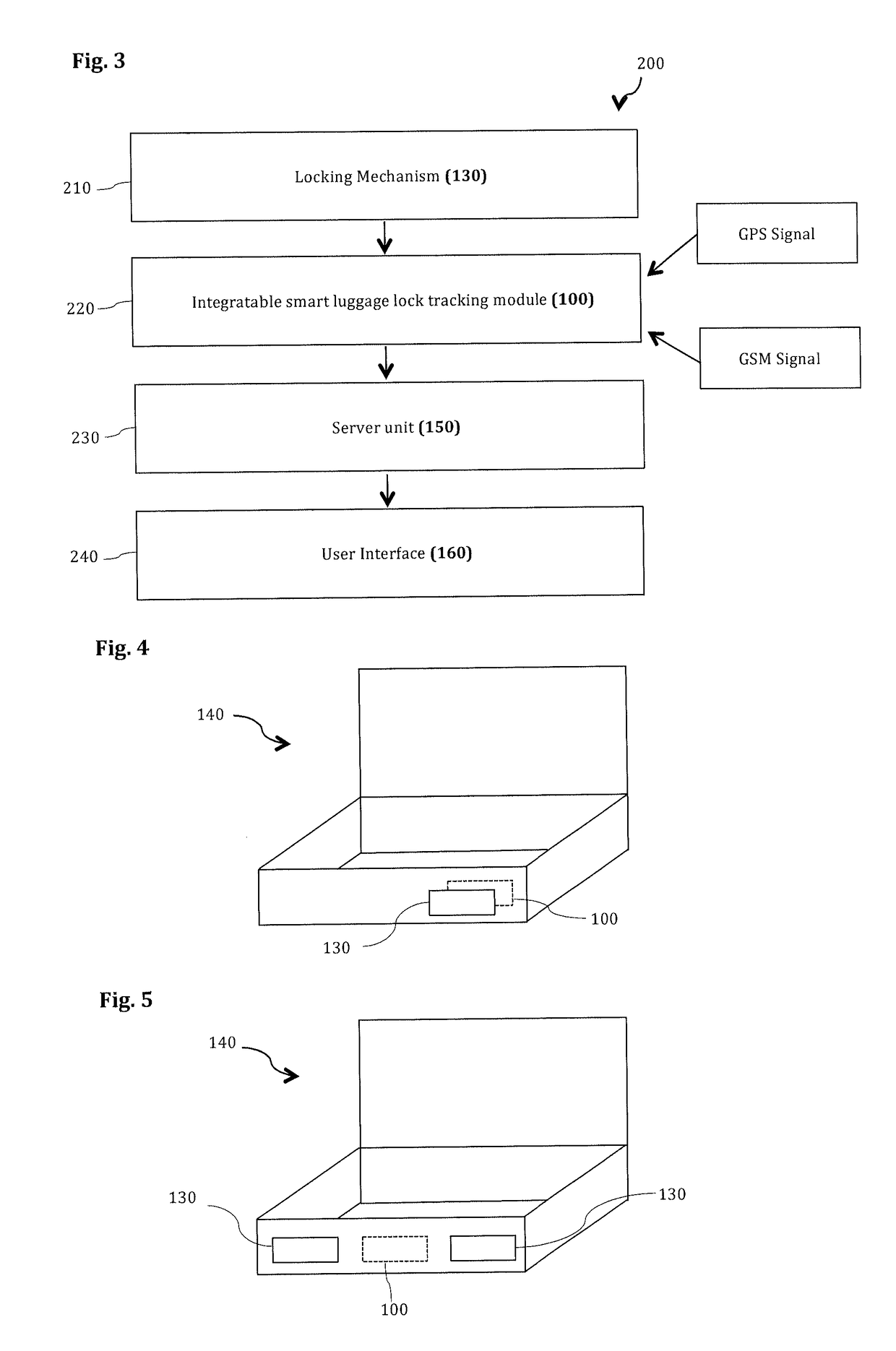Luggage Tracking Device, Systems and Methods
- Summary
- Abstract
- Description
- Claims
- Application Information
AI Technical Summary
Benefits of technology
Problems solved by technology
Method used
Image
Examples
second embodiment
[0088]With reference to FIGS. 6 and 7, in the present invention, the tracking device 1000 may comprise a self-contained portable device. The portable tracking device 1000 comprises a housing 1002 made from rigid plastics material or other suitably robust material. Advantageously, the portable tracking device 1000 gives a user the option of including the tracking device in any item that requires monitoring. Therefore, the device is not confined for use in a particular item of luggage.
[0089]The tracking device 1000 houses a processing module 1004 which provides tracking information and enables wireless communication of the information to remote electronic communication devices such as smartphones, computers, networking apparatus and other programmable apparatus.
[0090]The processing module 1004 comprises a memory 1006, a memory controller 1008, one or more processing units (CPUs) 1010, an accelerometer 1012, a global positioning satellite (GPS) module 1014, at least one signal booster ...
first embodiment
[0095]As with the first embodiment, the accelerometer module 1012 is configured to detect changes in acceleration of the tracking device to determine whether the device 1000 is at rest relative to the surface of the earth or, for example, subject to movement such as along a conveyor belt, during taxiing of an aircraft or during take-off or landing. Using acceleration data communicated from the accelerometer 1012, the processing module 1004 is operable to disable or enable transmitting capabilities respectively during take-off, taxiing and landing so that the GPS or Bluetooth modules 1018 do not emit wireless signals that could interfere with the functioning of aircraft at crucial times. Data from the accelerometer module 1012 can also be used by the processing module 1004 to determine appropriate times to enter into a sleep mode to conserve power, such as when at rest relative to the surface of the earth.
[0096]The CPU 1010 runs one or more software programs stored in the memory 1006...
PUM
 Login to View More
Login to View More Abstract
Description
Claims
Application Information
 Login to View More
Login to View More - R&D
- Intellectual Property
- Life Sciences
- Materials
- Tech Scout
- Unparalleled Data Quality
- Higher Quality Content
- 60% Fewer Hallucinations
Browse by: Latest US Patents, China's latest patents, Technical Efficacy Thesaurus, Application Domain, Technology Topic, Popular Technical Reports.
© 2025 PatSnap. All rights reserved.Legal|Privacy policy|Modern Slavery Act Transparency Statement|Sitemap|About US| Contact US: help@patsnap.com



